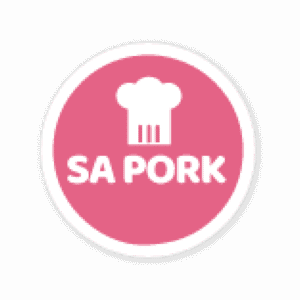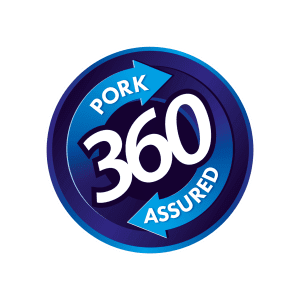By Dr Lucia Anelich*
The foodborne disease, listeriosis, caused by ingesting food contaminated with infectious doses of Listeria monocytogenes has caused 81 deaths in South Africa and has resulted in 767 confirmed cases at the time of going to print. I wrote a while back that it is the “worst documented listeriosis outbreak in global history,” and it shows no signs of abating, particularly as the source has as yet not been found.
So how did this outbreak happen and why now?
This is a complex question and this article is not intended to necessarily provide answers. It does, however, highlight certain important points with the purpose of stimulating further discussions, hopefully leading to coordinated actions related to food safety activities in all sectors, particularly government and industry.
The World health Organisation (WHO) estimates that 600 million people – almost one in ten in the world – fall ill after eating contaminated food and 420 000 die every year. We also commonly state that there is no zero risk in life and the same is certainly true for food safety.
Unsafe food creates a vicious cycle of diarrhoea and malnutrition, threatening the nutritional status of the most vulnerable. Food safety is therefore inextricably linked to food security, an issue that still affects millions of people in South Africa.
So, who is responsible for providing safe food to the consumer? There are in fact three groups/pillars responsible for ensuring that food is safe at the point of consumption:
- Government with the responsibility of protecting public health and ensuring fair practices in food trade. Food safety should be made a priority by governments as they play a pivotal role in developing policies and regulatory frameworks as well as establishing and implementing effective food safety systems that ensure that food producers and suppliers along the whole food chain operate responsibly and supply safe food to consumers.
- The food industry (in the broader sense) with the responsibility of producing food that is safe for human consumption. Food can become contaminated at any point of production and distribution, and the primary responsibility lies with food producers. Food producers and suppliers along the whole food chain must operate responsibly, comply with regulations and supply safe food to consumers. Yet a large proportion of foodborne disease incidents are caused by foods improperly prepared or mishandled in food service establishments, markets, hotels and the like.
- Consumers form the third pillar and not all consumers understand the very important roles they must play, such as adopting basic hygienic practices when buying, transporting food home, preparing and storing food to protect their health and that of their families.
Whilst the Foodstuffs, Cosmetics and Disinfectants Act 54 of 1976 states that the sale, manufacture and importation of food that is unfit for human consumption is prohibited, the Act should be supported by appropriate regulations.
No requirements
As things stand, there are no regulated requirements for testing for Listeria monocytogenes in Ready-To-Eat foods, which are most often implicated in listeriosis outbreaks.
Typically R692 (Regulations Governing Microbiological Standards for Foodstuffs and Related Matters) would contain mandatory requirements for testing above-mentioned foods.
The revision of this regulation began in 2016, not only to include requirements for Listeria monocytogenes, but also to revise existing requirements and reformatting the regulations to reflect the modern risk-based approach used in many other countries.
However, revision of this regulation has not been completed.
Besides the mandatory Certificate of Acceptability issued by the Department of Health covering basic hygiene requirements, the next set of regulations to manage food safety are contained in R908, Regulations Relating to the Application of the Hazard Analysis and Critical Control Point System (HACCP). However, R908 is not mandatory for all sectors of the food industry; it is only mandatory for peanut sorting/grading facilities and peanut butter manufacturers. Consequently, the implementation of HACCP and HACCP-based systems is essentially voluntary in South Africa.
This is not the case for most developed countries, where a HACCP-based food safety management system (FSMS) is a regulated requirement for all food business operators. Is it perhaps time to make HACCP implementation mandatory for other high-risk sectors?
Industry level
At industry level, the reality in South Africa is that many customers require their suppliers to have a certified HACCP-based FSMS in place.
The Certification Body providing certification should also be accredited by the South African National Accreditation System (SANAS) or similar accreditation body affiliated to the International Accreditation Forum (IAF). When a FSMS is implemented correctly, it is supported by appropriate microbiological testing as verification that the FSMS is effective. In addition, customers often have their own list of specific requirements, many of which include microbiological testing, which differ depending on the risk associated with the product/ingredient supplied i.e. reflecting a modern risk-based rather than a hazard-based approach.
All food handlers in the catering environment require adequate training in appropriate handling of food as well as formal supervision to ensure that Good Hygiene Practices are understood and implemented continuously i.e. maintaining a food safety culture.
Consumer awareness campaigns are essential to inform the consumer of his/her contribution towards ensuring safe food. Such awareness campaigns should be developed and conducted in a partnership between government and civil society.
South Africa has a fragmented food control system in that the Department of Health (DoH), Department of Agriculture Forestry and Fisheries (DAFF) and the Department of Trade and Industry (DTI) all have mandates related to food control activities.
A number of projects conducted in South Africa since 1997, supported by organisations such as the Food and Agriculture Organisation (FAO) and the World Bank have highlighted the weaknesses in the system and have emphasised the lack of a national food safety policy.
Framework
It is recognised that a National Food Safety Policy and action plan provide a framework within which to enhance coordination among the different departments and bring together fragmented initiatives and actions in the area of food safety. A well-conceived National Food Safety Policy would clearly describe the roles of the three different pillars i.e. governmental agencies, the food industry and consumers as well as establish mechanisms for cooperation and the means for dealing with existing and emerging food safety challenges. In August 2014, a National Policy on Food and Nutrition Security (NPFNS) was gazetted by DAFF, in which food safety is mentioned.
This was followed by a very ambitious Food and Nutrition Security Implementation Plan in December 2014. However, both the NPFNS and the Implementation Plan fall short of elaborating adequately on food safety matters.
The Food and Agriculture Organisation (FAO) and the World Health Organisation (WHO) are in the process of finalising a new Food Control System Assessment Tool, which I am involved with as technical expert to FAO.
Furthermore, I am the international consultant to FAO on a current project on implementing this tool in Malawi. This comprehensive assessment tool provides a way of measuring the performance of a national food control system. More specifically it:
- Offers an opportunity for developing a common understanding and vision among competent authorities and other associated stakeholders (private sector, consumers, academia), (1) of the current status of the national food control system, and (2) of the priorities for progress,
- Enables, guides and measures the improvement process that would be developed and implemented by the various stakeholders, supported by a clear baseline,
- Potentially supports a dialogue with external stakeholders.
Wake-up call
There is no doubt that the listeriosis outbreak has been a wake-up call for government, industry and consumers in South Africa. In a number of countries, foodborne disease outbreaks have triggered the strengthening of national food control systems e.g. the Food Standards Agency in the United Kingdom was created as a result of the Bovine Spongiform Encephalopathy (BSE) incident also known as Mad Cow Disease; the Federal Agency for the Safety of the Food Chain in Belgium was created when polychlorinated biphenyls (PCBs) contaminated with dioxins were accidentally added to a stock of recycled fat used in the production of animal feeds, resulting in excessive levels of dioxins in chicken meat.
Is the listeriosis outbreak THE trigger to create fundamental and significant changes in the food control system in South Africa? Will it result in food safety finally receiving the elevated importance and attention that it requires? After all, both food and nutrition security are denied when food is unsafe.
*Dr Lucia Anelich is owner of Anelich Consulting, food microbiologist and food safety expert; president of SA Association of Food Science and Technology (SAAFoST), member of the International Commission on the Microbiological Specifications for Foods (ICMSF); fellow of the International Academy of Food Science and Technology; chair of the Scientific Council of the International Union of Food Science and Technology (IUFoST).
The article previously appeared in Food and Beverage Reporter.
The South African Pork Producers’ Organisation (SAPPO) coordinates industry interventions and collaboratively manages risks in the value chain to enable the sustainability and profitability of pork producers in South Africa.








